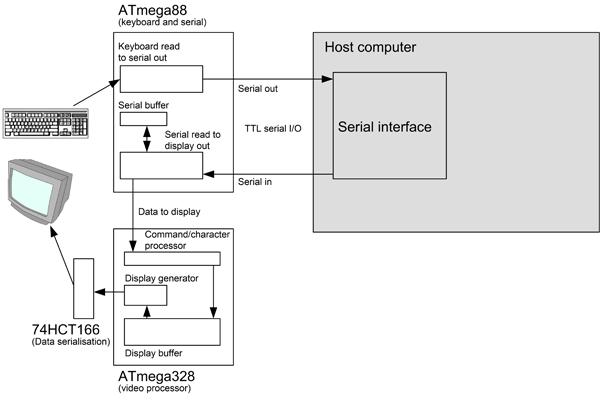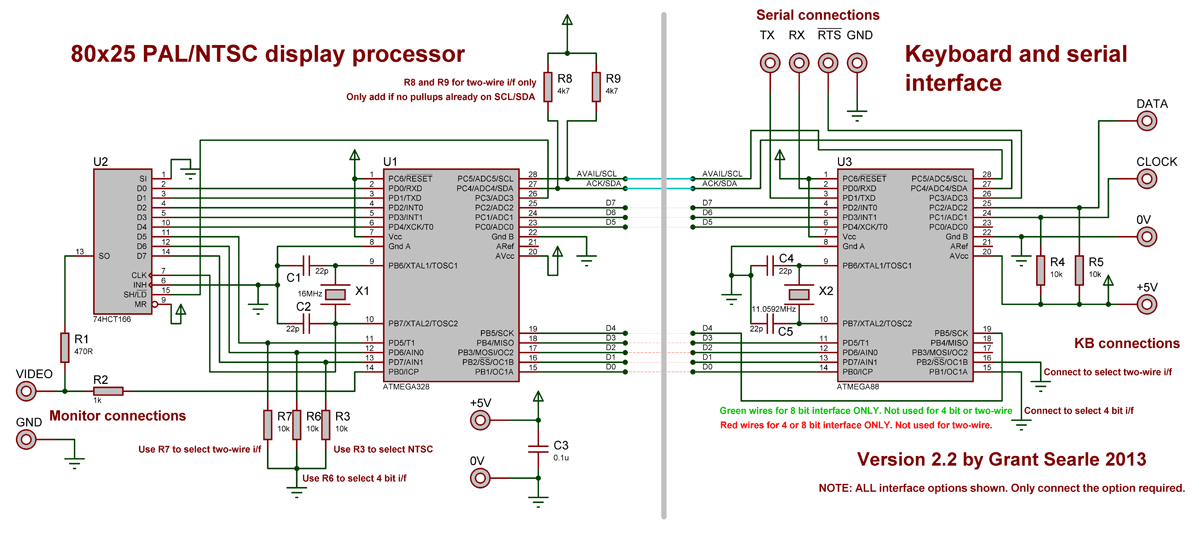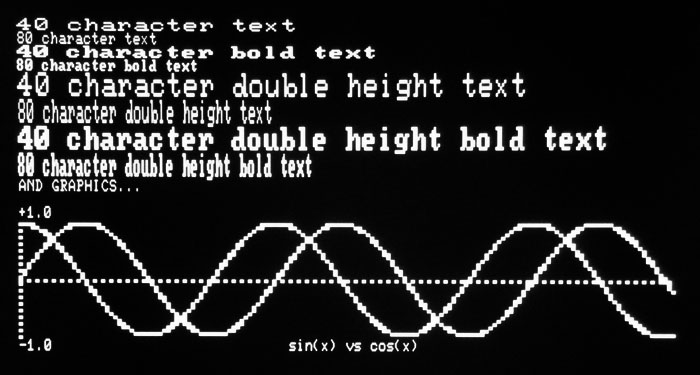spent quite a bit of time researching microcomputer era video, and i concluded that a late 70s-early 80s design for the @permacomputer project is horrendously complicated, if not prohibitively expensive.
take the MC6845 for instance. all it does is set up the display memory timing and its addressing. you need even more circuitry after that to actually generate the pixels.
the 6847 is a chip for a complete video solution, if you can tolerate its meagre 32 column text mode.
the further i got through don lancaster's cheap video cookbook the further my stomach dropped: quite often these chips are so slow compared to TV signal frequencies that you have to trade off features to get a decent resolution.
-*-
one particular method i had considered in the past was not to directly integrate video into the 8 bit computer design, but use a cheap microcontroller as a video terminal, and have the computer use its ACIA chip to communicate with it via serial comms.
there are a great number of these microcontroller video terminal projects. i have a list of them and will be publishing it under the permacomputer project.
please find attached a schematic from an incredible, yet bitrotted website. using two very cheap microcontrollers makes for a beautiful solution.
and 80x25 text mode!
i do not think using these microcontrollers contradicts the spirit of permacomputing.
using microcontrollers removes the need to sacrifice system memory for VRAM. it also makes the permacomputer modular--if one part of the system fails, you can still use the other half.
it is also a very cheap solution, and that is good for making the permacomputer easier to produce and access.



@vidak @permacomputer Something that I mentioned on the CollapseOS list as well: what about a voice-only output? Even simpler than a teletype. You can have it output Morse code through a Piezo buzzer at a variable speed. Can upgrade it to TTS, if it can handle it.
Bonus: it would force the UI to be accessible from the get go.
@csepp @permacomputer TTS is trivial, i believe! you made me think--this needs to be a device that is immediately comprehensible.
- replies
- 0
- announces
- 0
- likes
- 0
